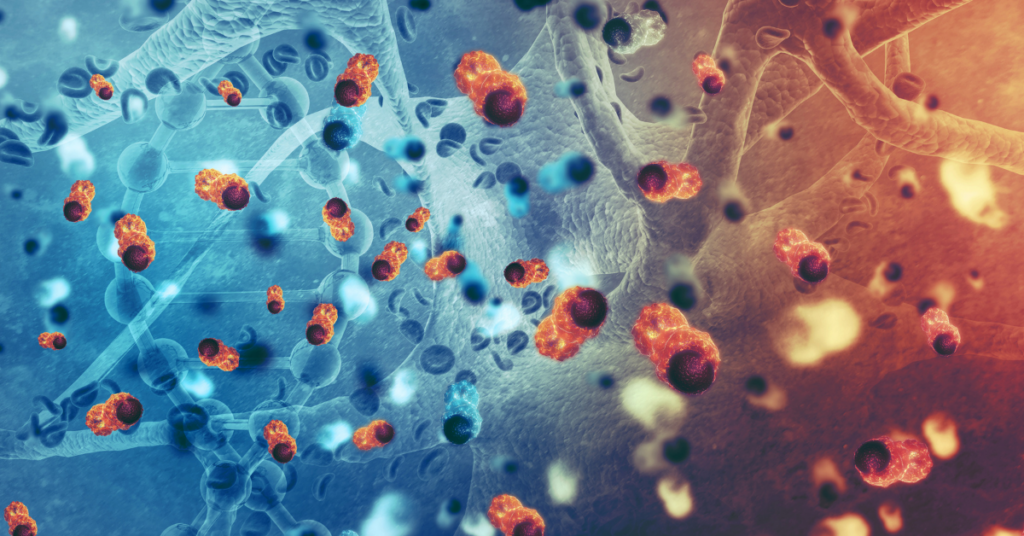When you look at a launch vehicle sitting on the launch pad, you know there was a lot of intelligence and design involved. Though you didn’t witness firsthand the designers and engineers working through test data and analyses, and you didn’t watch the technicians welding and assembling the pieces together, you know the launch vehicle standing before you was not a fortunate accident. It took planning and forethought to account for every component to be integrated together to perform a function.
The launch vehicle looks remarkably more designed than, say, a pile of scrap metal in a junkyard. Because of how you know the world works, intelligence must be the driving force behind the formation of the launch vehicle, but natural processes and chaotic accidents could be the driving force behind the scrap pile.
You could say that is an evidential approach to understanding these two scenarios. The evidence you have accumulated from how the world works indicates that when things are intricately designed from several well-matched and integrated parts in order to function, there was intelligence involved. We can apply this same type of logic to the origin of life itself.
How did living things originate?
All living things share certain characteristics that make them living things, distinguished from non-living things. Instinctively we know that a flower is different from a cell phone. Scientifically speaking, living things are able to move, respire, sense, reproduce, ingest nutrients, excrete waste, and grow. But the component that allows living things to do this – and again separates living things from non-living things – is protein. Proteins are found in all living cells. No living cell can function without proteins.
So how did nature leap from non-living substances to living things? There had to be some way to get proteins. In the atheistic evolutionary model, proteins would have to occur naturally, arising from only the substances assumed to be present in the primordial soup (something Darwin referred to as a “warm little pond”) and the ancient atmosphere. Scientists Oparin and Haldane postulated in the 1920s that a lightning strike to this “primordial soup” could produce the chemical building blocks of life. Primitive living cells could have then emerged from this mixture.
In the early 1950s, Stanley Miller conducted an experiment (known as the Miller-Urey experiment) to test this idea that living substances could arise through natural processes in chemistry. He simulated a water cycle using what scientists thought were early atmospheric conditions – methane, ammonia, hydrogen, and water (notice there is no oxygen included). Then he added electric shock to simulate lightning and other thermal effects on the earth (good thing he didn’t include that oxygen! But did the early atmosphere really not contain any oxygen?). The result was a few basic organic compounds and two amino acids. Further experiments with this same set up produced nearly all of the known amino acids.

However, over the next several decades, scientists agreed the atmospheric conditions Miller and Urey used were not an accurate prediction of what earth’s atmosphere must have been. Most scientists agreed earth’s atmosphere would not have been a methane-ammonia heavy atmosphere that was oxygen-free.
By 1983, Miller conceded on this point. So he refined the atmospheric conditions in his experiment set-up by removing methane and ammonia and then adding water vapor, carbon dioxide, and nitrogen. But this contrived atmosphere did not produce the same results. By the 1990s, a majority of scientists and geochemists dismissed the Miller-Urey experiment because it used conditions that looked nothing like what the early atmosphere would have been. And those conditions failed to produce organic chemical compounds and amino acids.
But even if we could manufacture amino acids from chemistry, does that generate life?
To answer that we have to get some kind of understanding of what proteins are. Proteins are chain-like molecules comprised of amino acids arranged and linked together in a specific sequence. Once the amino acids are attached, the protein folds onto itself to form a 3-D shape. As a part of that shape, it forms what is called an “active site” where an enzyme attaches so the protein can perform its function. This feature is described as a “lock and key mechanism” because the shape on the protein is precisely shaped to mate with its related enzyme, just like a lock is precisely shaped to mate with its related key.
So even if the primordial soup could be shocked and heated to generate amino acids, there must be some way for the amino acids to assemble in the specific order necessary to generate a specific protein that will mate with a specific enzyme. The likelihood of this happening naturally decreases drastically, especially when these proteins need to be contained in some way. Proteins floating in the primordial soup still do not give rise to a living cell floating in the primordial soup.
Furthermore, the amino acids on the protein chain can be compared to letters in a long word – a very long word since proteins contain somewhere between 50 and 2000 amino acids. Just as in language, each word not only needs the correct letters present, but those letters must be in the correct order for the word to make sense. If the primordial soup could produce amino acids, this would be like the bag of letters for Scrabble. Shuffling them in the bag and dumping them on the floor does not produce intelligible words. You may get a letter tile turned face up, but you will not get distinct words, much less words strung together in sentences using grammar and syntax in order to provide usable information. And that is what proteins are.
Can proteins self-assemble?
In addition, the more biochemists have learned about proteins, the more obvious it became that proteins cannot self-assemble from a jumbled bag of amino acids. There was something outside of the proteins directing this process. That director is called DNA.
DNA is often called the “blueprint of all life.” And like a blueprint for a building, DNA is the assembly instructions for supporting life. It not only dictates what amino acids will be used in the assembly of each protein, but tells the cell what proteins need to be made.
If you’ve ever done any of the “some assembly required” projects, then you know how important good instructions can be! But regardless of how good or bad the instructions are, you know there is intelligence involved behind them. However, if your furniture assembly instructions are bad, you have a wobbly table. If the DNA assembly instructions are wrong, proteins cannot form and life does not exist.
But the instructions found within DNA are even more astounding than your furniture instructions. The DNA instructions are written in code themselves. Inside the DNA, are four nitrogenous bases arranged in their own code. Messenger-RNA reads across the nitrogenous bases in groups of three which translate to a particular amino acid. That amino acid is retrieved and then attached to the protein chain. Therefore, there is coded language directing coded language to build a specific protein to perform a specific function for your living cells.
This is the amazing design of life. This information written in code, then decoded to form a new code, to create life requires intelligence. It is not the random chaotic accidental pile of scrap metal. It is the amazingly, precisely, designed, tested, and functional launch vehicle sitting on the pad awaiting its flight to space.
For more on the Urey-Miller experiment, read chapter two of Icons of Evolution: Science or Myth? By Jonathan Wells
For more on protein formation, watch “Documentary Unlocking the Mystery of Life Intelligent Design” found at https://www.youtube.com/watch?v=tzj8iXiVDT8

Cathryn Sterling Buse
Cathryn is a NASA engineer turned Christian apologist, author, and founder of Defend the Faith Ministry. She now homeschools her two sons, Connor and Luke.





3 thoughts on “Are Proteins an Accident or a Planned Design?”
One thing that struck me about the Urey-Miller experiment (after I became a Christian – why was it always after?) was that the experiment was DESIGNED. Intelligence went into that experiment that allegedly was DESIGNED to resemble random conditions.
Where did the intelligence, design, and even ingredients come from if not from an Intelligent Designer?
Based on that, I concluded that it is impossible to design ANY experiment that would remove the necessity for God.
A completely fascinating post! I learned a lot. Your description of DNA was especially interesting.
Thank you so much! I’m glad you enjoyed it and learned something from it!
Comments are closed.